Key Takeaways
- Email automation flows enhance customer engagement and boost conversion rates by delivering timely and personalized messaging based on user behaviors.
- Three essential email automation flows include welcome emails, abandoned cart reminders, and post-purchase follow-ups, each crucial for nurturing relationships and driving revenue.
- The future of email automation is influenced by AI and machine learning, which enable advanced personalization, optimize campaign performance, and promote cross-channel integration for cohesive customer experiences.
Understanding Email Automation Flows
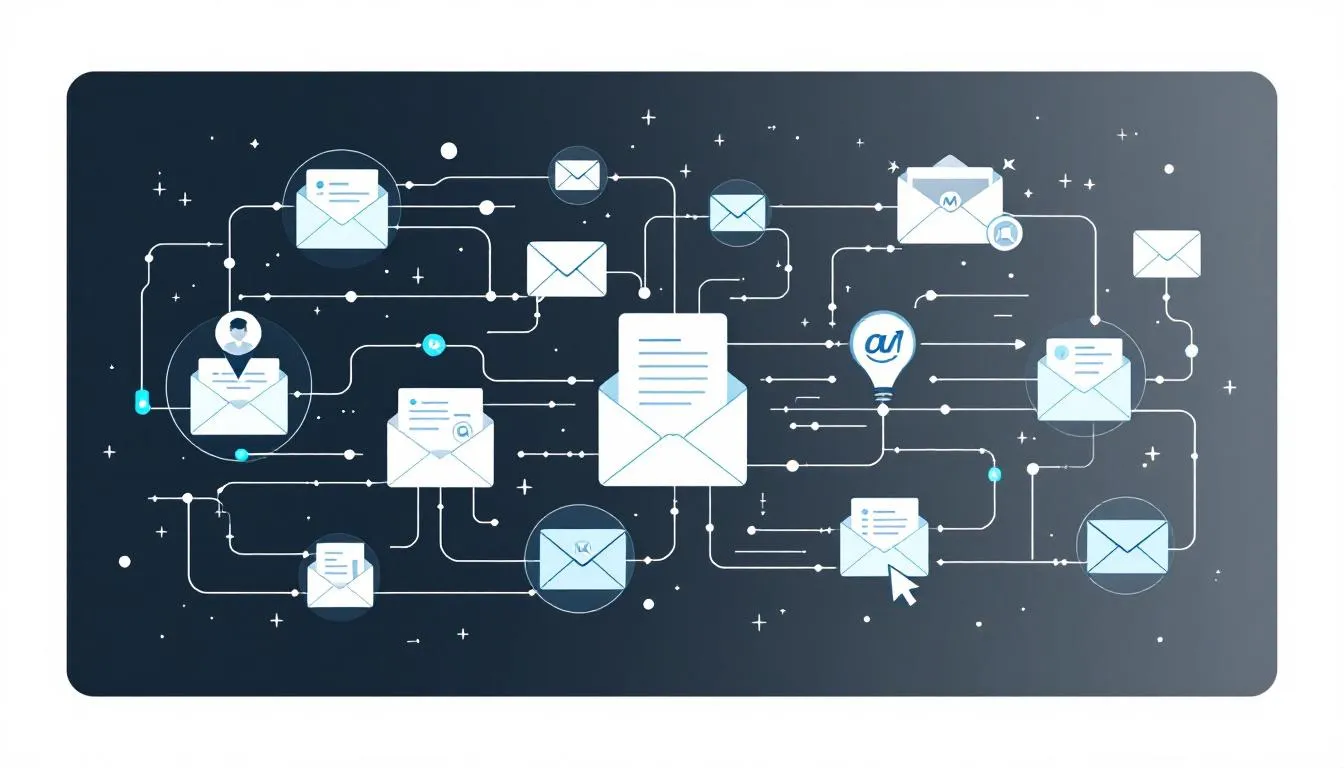
Email automation flows are the backbone of effective email marketing automations. These predefined sequences of emails are triggered by specific actions or behaviors of your audience, allowing you to automatically send targeted and timely messages. The power of email automation lies in its ability to streamline communication, enhance personalization, and improve customer engagement.
Understanding the potential of email automation involves knowing what these flows entail and why they are crucial for your marketing strategy. The following sections will explore the specifics and their benefits.
What Are Email Automation Flows?
Email automation flows streamline the process to send automated emails. These sequences of preset emails are triggered by customer interactions, such as completing a form or clicking a link. Guiding customers through their journey, from welcome emails to post-purchase communications and email workflow, ensures each interaction is meaningful and relevant.
For ecommerce businesses, email automation flows are particularly valuable as they enhance the customer experience by delivering personalized messages based on real-time triggers. Marketing automation platforms enable brands to efficiently engage and retain customers, ultimately driving higher conversion rates.
Why Use Email Automation Flows?
Email automation flows save time, enhance personalization, and improve customer engagement. Brands can respond to customer behaviors and preferences in real-time, delivering personalized, data-driven messages that resonate with recipients. Automated emails can generate up to 30 times more revenue per recipient than one-off campaigns.
By engaging customers more effectively, email automation workflows help drive conversions and build stronger relationships. Brands can reach the right people at the right time, ensuring that their marketing efforts are both efficient and impactful.
Essential Email Automation Flows for Businesses
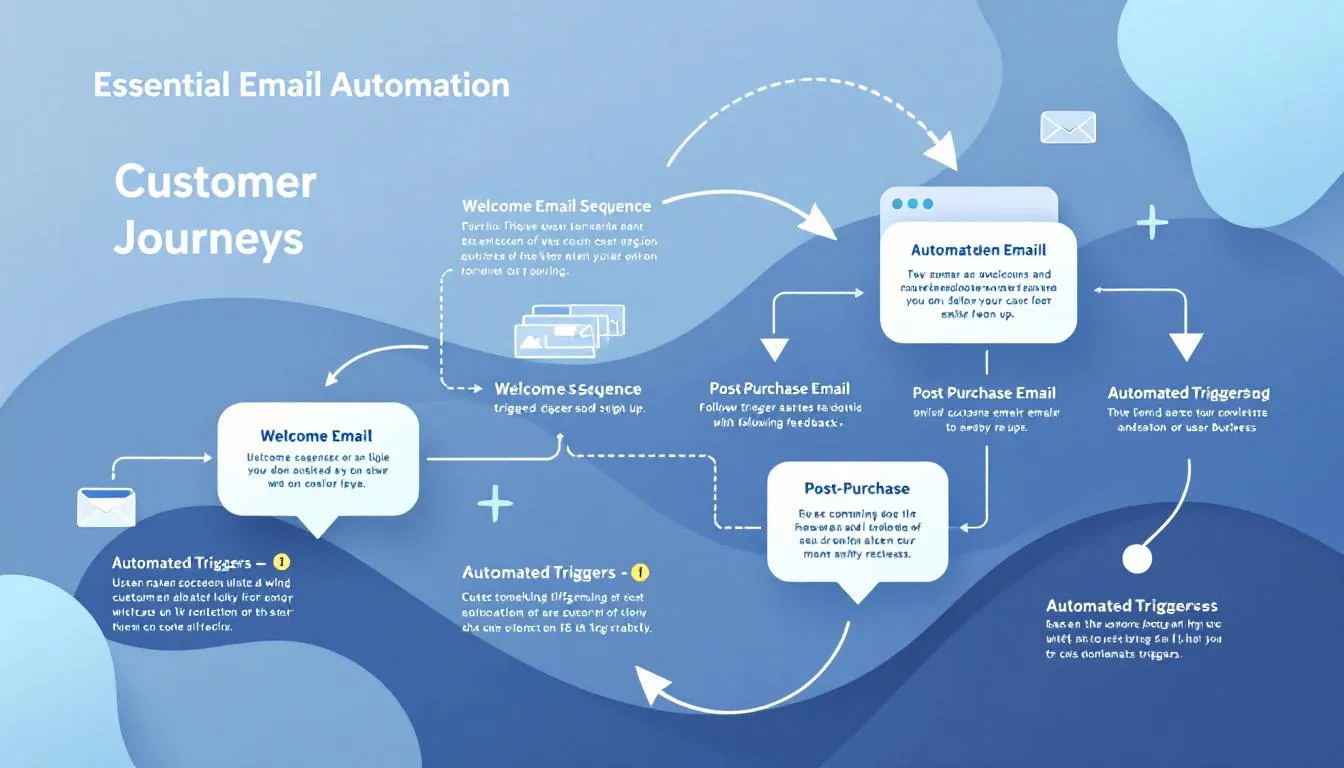
Email automation flows are key to nurturing customer relationships, driving revenue, and enhancing marketing strategies. These automated flows enable businesses to automate communication, optimizing customer engagement based on specific actions. Successful email automation flows can significantly enhance customer engagement and boost sales across various industries.
Three essential email automation flows every business should implement are the welcome email flow, the abandoned cart flow, and the post-purchase email flow. Each plays a crucial role in engaging customers and driving conversions.
Welcome Email Flow
Welcome emails are the first step in building a strong relationship with new subscribers. These automated emails introduce the brand and make a lasting first impression. A well-crafted welcome series often includes:
- Resources
- Product information
- Offers
- Discounts
These elements help engage new subscribers and guide them through the onboarding process when a subscriber joins to nurture leads with effective lead magnets and a referral program.
Abandoned Cart Flow
Cart abandonment poses a major challenge for ecommerce businesses. Nearly 70% of online shopping carts are abandoned. Abandoned cart flows are designed to re-engage customers and encourage purchase completion by reminding them of the items left in their carts. These emails often include personalized discounts and product recommendations to entice customers to complete their purchases.
The effectiveness of abandoned cart flows is evident, with some ecommerce brands generating approximately 30% of their revenue from these emails. On average, abandoned cart flows achieve an average revenue per recipient (RPR) of $3.65, making them a valuable tool for improving customer retention and boosting sales.
Post-Purchase Email Flow
Post-purchase emails are follow up email messages sent after a sale aimed at enhancing customer support and retention. These emails play a crucial role in deepening customer relationships and converting one-time purchasers into brand advocates. Post-purchase emails can include:
- Order confirmations
- Instructional emails
- Product review requests
- Replenishment reminders
For instance, product review requests encourage customers to provide feedback, acting as beneficial touchpoints for future engagement. Replenishment reminders are tailored based on SKU-specific timelines, optimizing engagement and encouraging repeat purchases.
By demonstrating proactive customer service through instructional emails, brands can enhance the post-purchase experience and foster long-term loyalty.
Advanced Email Automation Flows
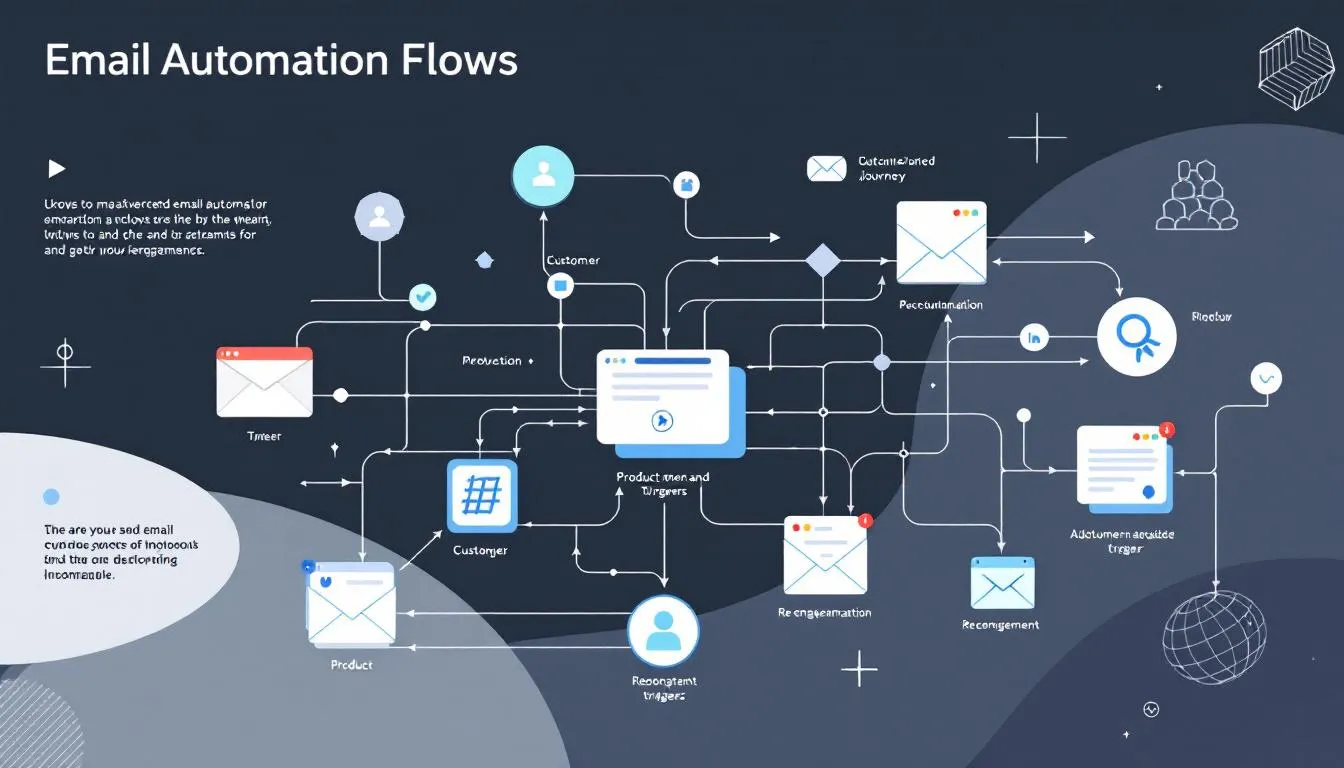
For businesses looking to take their email marketing to the next level, advanced email automation flows offer sophisticated strategies to engage customers. These flows enable marketers to create highly targeted and personalized email sequences that respond to specific customer behaviors and actions. By turning email campaigns into conversations with subscribers, these advanced flows significantly enhance customer engagement.
In this section, we’ll explore three advanced email automation flows: the product recommendation flow, the reengagement email flow, and the seasonal promotion flow. These flows are designed to deliver personalized experiences and drive higher conversion rates.
Product Recommendation Flow
Personalized product recommendations are an effective way to guide customers through their shopping journey. By integrating customer behavior data into product recommendation emails, brands can offer tailored suggestions based on browsing and purchasing history. This approach leads to higher conversion rates and sales, as customers are more likely to engage with relevant product suggestions. Additionally, personalized marketing can enhance the overall shopping experience.
Reengagement Email Flow
Reengagement emails are designed to win back lost subscribers and maintain open rates. These emails revive interest in customers who have not interacted with emails for a while, encouraging their return. Timing is crucial for reengagement emails, as poorly timed messages may be ignored or lead to unsubscribes.
An effective reactivation strategy includes informing subscribers that they will be unsubscribed unless they resubscribe. By using major conditions to strategize customer re-engagement, brands can successfully revive subscribers interests and improve customer retention, ultimately aiming to lower the unsubscribe rate.
Seasonal Promotion Flow
Seasonal promotional marketing emails leverage timely themes to resonate with customers and encourage purchases. Utilizing urgency in these promotions can drive immediate action from consumers during peak shopping periods.
By incorporating limited-time offers and special deals, brands can boost sales and enhance customer engagement during seasonal events.
Implementing Email Automation Flows
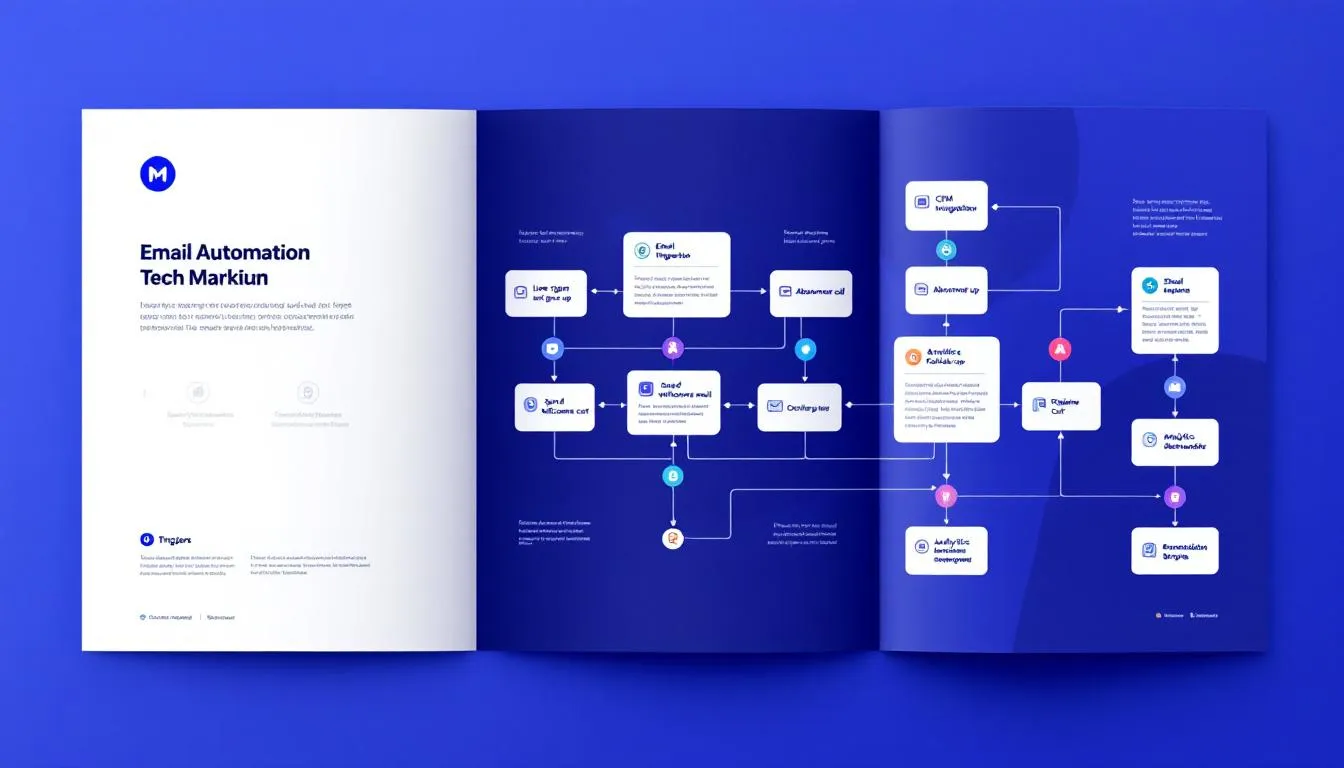
Implementing email automation flows requires the right marketing software, a well-defined opt-in subscriber list, and clear goals to steer email campaigns effectively. Best practices for setting up an email marketing automation strategy include incorporating personalization techniques, segmenting audiences for better targeting, and optimizing send times to increase open rates.
In this section, we’ll discuss how to choose the right email automation tools, set up triggers and conditions, and test and optimize email flows to ensure maximum effectiveness and engagement.
Choosing the Right Email Automation Tools
Selecting the right email automation tools is crucial for creating effective email workflows. Essential features to look for in an email automation platform include real-time personalization, automated email capabilities, campaign optimization, and enhanced customer engagement. A good marketing automation platform should centralize customer data, segment the audience, and send triggered emails effectively.
For example, GoodSolutions.tech’s engagement automates, optimizes, and scales your email marketing strategy to provide better results. Integrating email with social media and other marketing channels can amplify campaign reach and effectiveness.
Setting Up Triggers and Conditions
Triggers and conditions are the backbone of email automation workflows. Subscriber behaviors like joining a newsletter or clicking a link trigger can serve as effective triggers for automated emails. An automated email should be sent immediately when a subscriber completes a form, ensuring timely communication. This process can be enhanced by setting an email automation trigger.
Monitoring email automations allows you to learn and improve based on patterns in click, conversion, and open rates. Advanced plan users can utilize a multi-trigger setup, allowing up to three triggers for one workflow to create more dynamic and responsive email sequences.
Testing and Optimizing Email Flows
Testing and optimizing email flows are essential for continuous improvement. A/B split testing is used to test and optimize subject lines, content, and send times. For example, BlaBlaCar’s goal for their A/B test was to increase open rates, and they succeeded by more than 20%.
By continuously refining email content based on past performance metrics, brands can enhance engagement and conversions. Regular testing ensures that email flows remain effective and aligned with marketing objectives.
Best Practices for Email Automation Flows
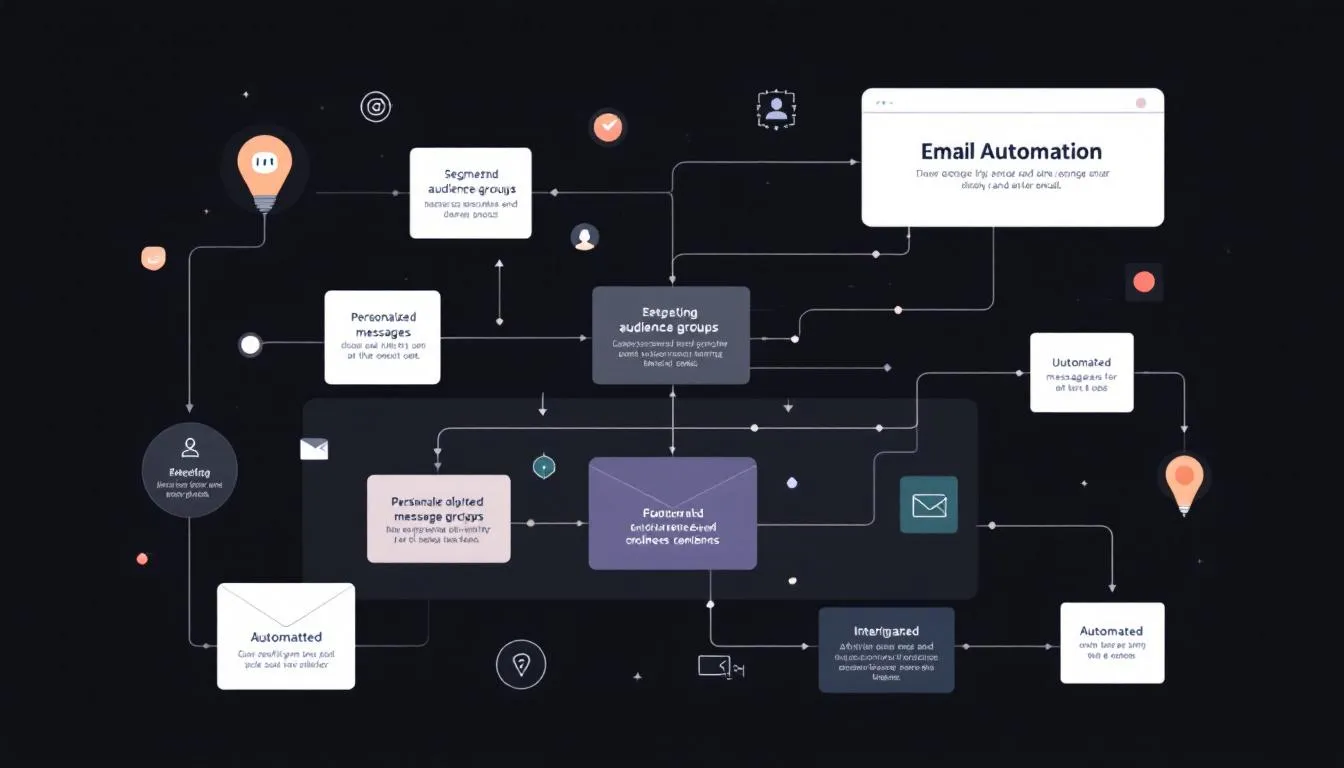
Implementing best practices for email automation flows can significantly enhance engagement and drive revenue. These practices include focusing on customer needs, personalizing content, and optimizing campaigns through automation. By fostering long-term relationships and loyalty, email automation flows contribute to sustained customer engagement.
In this section, we’ll explore best practices for personalization and segmentation, monitoring and analyzing performance, and ensuring deliverability to maximize the effectiveness of email automation flows.
Personalization and Segmentation
Personalization and segmentation are critical for engaging subscribers and delivering relevant content. Key strategies include:
- Automated sequences that provide tailored experiences catering to individual customer behaviors and preferences.
- Using personalized subject lines.
- Leveraging AI-driven analytics to significantly boost open and engagement rates for emails.
For SaaS companies, personalized email campaigns play a crucial role in reducing churn by continuously engaging users and addressing their needs. By creating dynamic content that resonates with specific customer segments, brands can improve engagement rates and drive conversions through targeted emails.
Monitoring and Analyzing Performance
Monitoring key performance indicators like click-through rates is essential for refining email campaign strategies. Tracking subscriber engagement metrics helps enhance the effectiveness of email automation by identifying what works and what doesn’t.
Adjusting email content based on past performance metrics can lead to improved engagement and conversions.
Ensuring Deliverability
Ensuring high email deliverability is crucial for maintaining effective communication with your audience. Understanding the nuances of email delivery helps maintain high deliverability rates and ensures that your emails reach the intended recipients.
Strategies like maintaining a clean subscriber list and optimizing email content can improve deliverability and overall email strategy and targeted messages in email marketing campaigns success.
Real-World Examples of Successful Email Automation Flows
Real-world examples of successful email automation flows provide a great example of how these strategies can be effectively implemented. By examining the experiences of different businesses, we can understand the impact of automated email campaigns on customer engagement and sales, including various email automation examples.
In this section, we’ll explore two case studies: one from an ecommerce brand and another from a SaaS company. These examples illustrate how tailored email automation flows can drive significant improvements in business performance and customer satisfaction.
Case Study: Ecommerce Brand
An ecommerce brand aimed to increase conversions through a comprehensive ecommerce email automation strategy. They achieved this by:
- Implementing an automated in-app message to ask for users’ emails
- Improving email engagement, which led to a 33% increase in open rates
- Experiencing a significant boost in platform engagement rates
Additionally, their back-in-stock notifications helped exceed overall 2022 email revenue goals by more than 2x. This strategy resulted in a substantial year-over-year revenue growth of 157.8% from their automated email flows.
By leveraging effective email automation, the brand successfully enhanced customer experience and achieved remarkable business growth.
Case Study: SaaS Company
For a SaaS company, automated email campaigns significantly enhanced the customer onboarding process by delivering timely information and guidance. These onboarding emails familiarized users with their products and increased user engagement, leading to higher customer retention rates through effective lead nurturing.
Self-service products or DIY services particularly benefited from user onboarding emails, as they guided customers through initial experiences. Effective onboarding through automated emails minimized churn and helped the company build stronger customer relationships.
For more details on implementing successful email automation strategies, consider GoodSolutions.tech
Future Trends in Email Automation
The future of email automation is being shaped by technological advancements and evolving customer expectations. AI and machine learning will play a crucial role in personalizing and optimizing email campaigns, making them more relevant to each individual recipient. Cross-channel integration will also become increasingly important, as email marketing aligns with other marketing channels to provide cohesive customer experiences.
In this section, we’ll explore the impact of AI and machine learning on email automation, as well as the significance of cross-channel integration in enhancing customer engagement and driving conversions.
AI and Machine Learning
AI and machine learning are transforming email marketing by automating processes and allowing for advanced data analysis. These technologies empower marketers to make data-driven decisions, leading to more effective email campaigns and highly personalized email experiences tailored to individual customer preferences.
By utilizing machine learning, marketers can optimize email send times and content based on customer behavior and engagement metrics. Overall, AI and machine learning not only enhance campaign efficiency but also significantly improve customer engagement in email marketing.
For cutting-edge solutions in email automation, consider GoodSolutions.tech.
Cross-Channel Integration
Cross-channel marketing automation is significant as it delivers cohesive experiences and enhances engagement. Integrating marketing channels leads to more engaging customer interactions and higher conversion rates. Despite its importance, approximately 50% of marketers lack the means for effective cross-channel marketing.
Leveraging cross-channel integration allows businesses to provide seamless customer experiences across multiple entry points. This approach improves customer engagement and drives conversions by offering consistent and relevant messaging, including opportunities to cross sell and enhance cross channel experiences.
For comprehensive marketing automation solutions, consider GoodSolutions.tech.
Summary
In summary, email automation flows are an essential component of a successful marketing strategy. By implementing these flows, businesses can enhance customer engagement, drive revenue, and build stronger relationships. From welcome emails to advanced flows like product recommendations and seasonal promotions, each type of automated email plays a crucial role in guiding customers through their journey. Embracing future trends like AI, machine learning, and cross-channel integration will further optimize these efforts. Start implementing these strategies today and watch your marketing results soar.
Frequently Asked Questions
What are email automation flows?
Email automation flows consist of automated sequences of emails triggered by specific user actions or interactions with a brand, allowing for more personalized communication and efficient marketing.
Why should I use email automation flows?
Using email automation flows is essential as they save time, enhance personalization, and significantly improve customer engagement, often generating 30 times more revenue per recipient compared to traditional campaigns.
What is an example of an essential email automation flow?
An essential email automation flow is the welcome email flow, as it effectively introduces your brand to new subscribers while engaging them with valuable resources and special offers. This sets a positive tone for future interactions.
How can I ensure high deliverability for my automated emails?
To ensure high deliverability for your automated emails, maintain a clean subscriber list, optimize your email content, and understand the factors affecting email delivery. This will significantly enhance your chances of successful email outreach.
What role does AI play in email automation?
AI plays a crucial role in email automation by streamlining processes, enhancing data analysis, and enabling personalized email experiences that cater to customer preferences. This technology ultimately improves engagement and effectiveness in email marketing campaigns.
#EmailAutomation #EmailMarketingAutomation #AutomatedEmails #WelcomeEmail #AbandonedCart #PostPurchaseEmails #ProductRecommendations #ReengagementEmails #SeasonalPromotions #EcommerceEmailMarketing #SaaSEmailMarketing #MarketingAutomation #AIEmailMarketing #MachineLearningEmail #CrossChannelMarketing #CustomerEngagement #ConversionOptimization #PersonalizedEmails #AudienceSegmentation #EmailDeliverability #EmailMarketingTips #GoodSolutionsTech #EmailTriggers #EmailOptimization #ABTesting #CustomerRetention #LeadNurturing #MarketingStrategy #DigitalMarketing #EmailWorkflow
